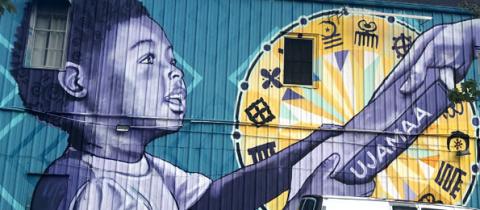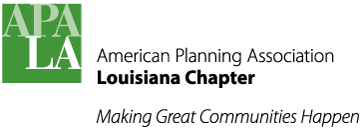Understanding New Orleans Qualified Opportunity Zones

On May 8, 2019 the University of New Orleans MURP 4005/5005 Introduction to Neighborhood Planning course provided a service learning project report on New Orleans Qualified Opportunity Zones for HousingNOLA. Executive Director Andreanecia Morris stated that “HousingNOLA aims to end New Orleans’ affordable housing crisis by using data to educate community members and facilitate policy discussions with decision makers at every level of government and the private housing industry. This often requires getting help researching and then distilling complicated concepts for our partners. We’re pleased to work with partners like Dr. Michelle Thompson and UNO’s Department of Planning & Urban Studies for this kind of research." Analysis of US Federal Qualified Opportunity Zones (QOZ) included how this national policy has been deployed in New Orleans, LA. The goal of the service-learning project was to provide a citizens guide to understanding the background, history, location and then to create a profile of select QOZs. “The course offered insight into real world practices not only of collecting the data but also being able to present it to an audience. Rather than feeling like the information would be collected for no reason, the information that we produced will be used for HousingNOLA and could go on to make a difference in someone’s life, which is very exciting,” said Gaige Hargrave.
This report, QOZs in the Big Easy: a study of Qualified Opportunity Zones in New Orleans (5/2019), may be used as a template to guide general research for a non-profit developer who is working in a priority QOZ census tract. The research completed by the University of New Orleans "QOZ Analysts" will serve as a ‘first look’ at QOZ data and definitions from national to state to local perspectives. In 2017, there were 150 opportunity zones nominated by Governor Jon Bel Edwards with 25 of these approved by the US treasury for the City of New Orleans. The students adopted a zone to provide an initial profile that replicated the type of information that individual and large businesses would be focused on when considering investments.

Jeralee Bérubé-Daigneault, Canadian exchange student stated, “After living for almost five months here and going to my designated neighborhood several times (and participating in a community meeting), I came to realize that I had absorbed some prejudices regarding all neighborhoods outside of the touristic parts, and that before judging I should have acknowledged that there is always an angle or a perspective in which I approach something. In the end, I am looking at an environment or a community based on my own experiences, culture and background. I feel this was an important lesson, especially in the context of wanting to become a city planner.”
The QOZs in the Big Easy: A study of Qualified Opportunity Zones in New Orleans report was developed to engage community, and philanthropy such as the Greater New Orleans Foundation, as well as, inform municipal government: the City of New Orleans Mayors’ Office, New Orleans City Council, New Orleans Business Alliance (who is leading the development of a QOZ strategic plan), the Jefferson Parish Economic Development Commission (JEDCO), Hammond Historic District Commission, and the State Office of Community & Economic Development. Samantha Romain suggests that “Every community and organization have a different approach to engage stakeholders and different strategies to disperse information. I enjoyed the ability to participate in neighborhood planning activities such as community and board meetings. This allowed students to hear residents’ accounts of the things they saw as problematic and/or beneficial to their neighborhoods. Being able to hear their concerns made me more cognizant of the type of research I needed to provide for the final report and stakeholders. Students learned of urban planning techniques from a bottom-up approach.”
Additional resources include a QOZ 'FAQ', step-by-step geospatial analysis tools for map making, socio-economic profiles development, the most recent US Treasury guidelines for creation of self-certifying QOZ funds and community reinvestment practices. Bobby Winkles reflects that “I learned an abundance of information that ranged from the financial side to the political side. Certain aspects of urban planning that I may not have understood before are now much clearer and easily understood, such as capital gains and typology. Working with geographic information systems (GIS) mapping interfaces was a tremendously important journey that allowed for me to greater utilize the resources available.” The report includes a customized map for the priority zones by each of the students with photo results from their site survey of community assets, zoning, flood, life expectancy, socio-economic census data, as well as, HousingNOLA typology and the City Market Value Analysis Indicators. The report includes a profile of the Algiers and New Orleans East QOZs which are considered a high priority by the Mayor LaToya Cantrell administration. The University of New Orleans will continue to play an important role in providing resources, pro bono, to our community partners as we monitor and evaluate the impact of QOZs in NOLA and beyond.
Citation:
Thompson, Michelle M. and Samantha Romain. “Community-University PGIS: Understanding New Orleans Qualified Opportunity Zones”, American Planning Association Louisiana Chapter, May 16, 2019.
The report can be downloaded at: http://works.bepress.com/michelle_m_thompson/81/. Contact Dr. Michelle M. Thompson, GISP with any questions at mmthomp1@uno.edu or 504-280-6593.





